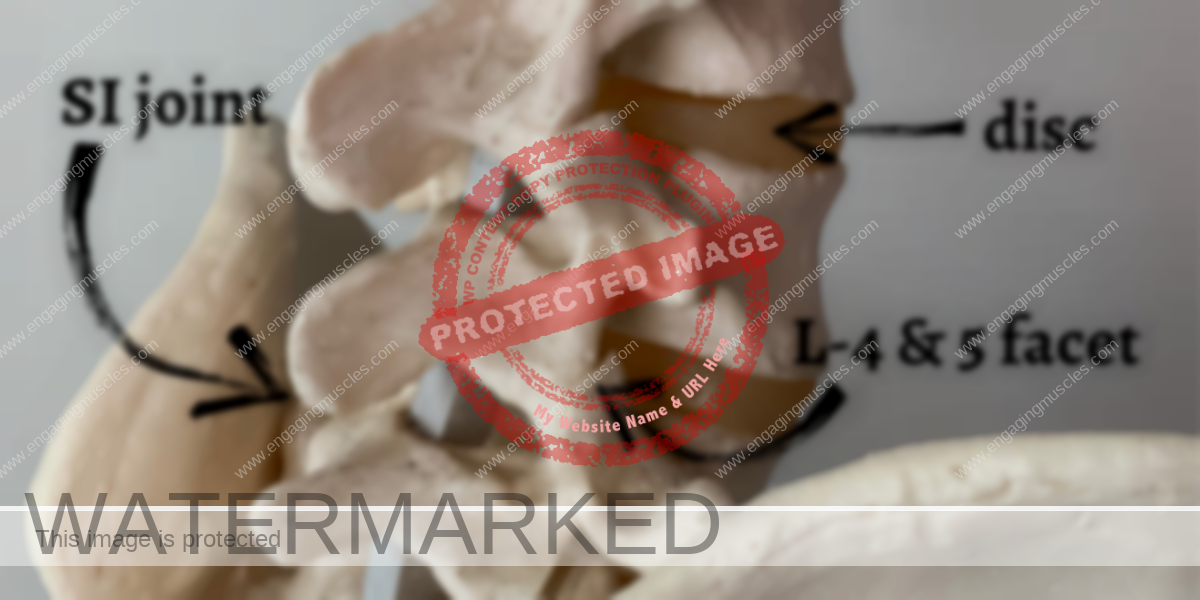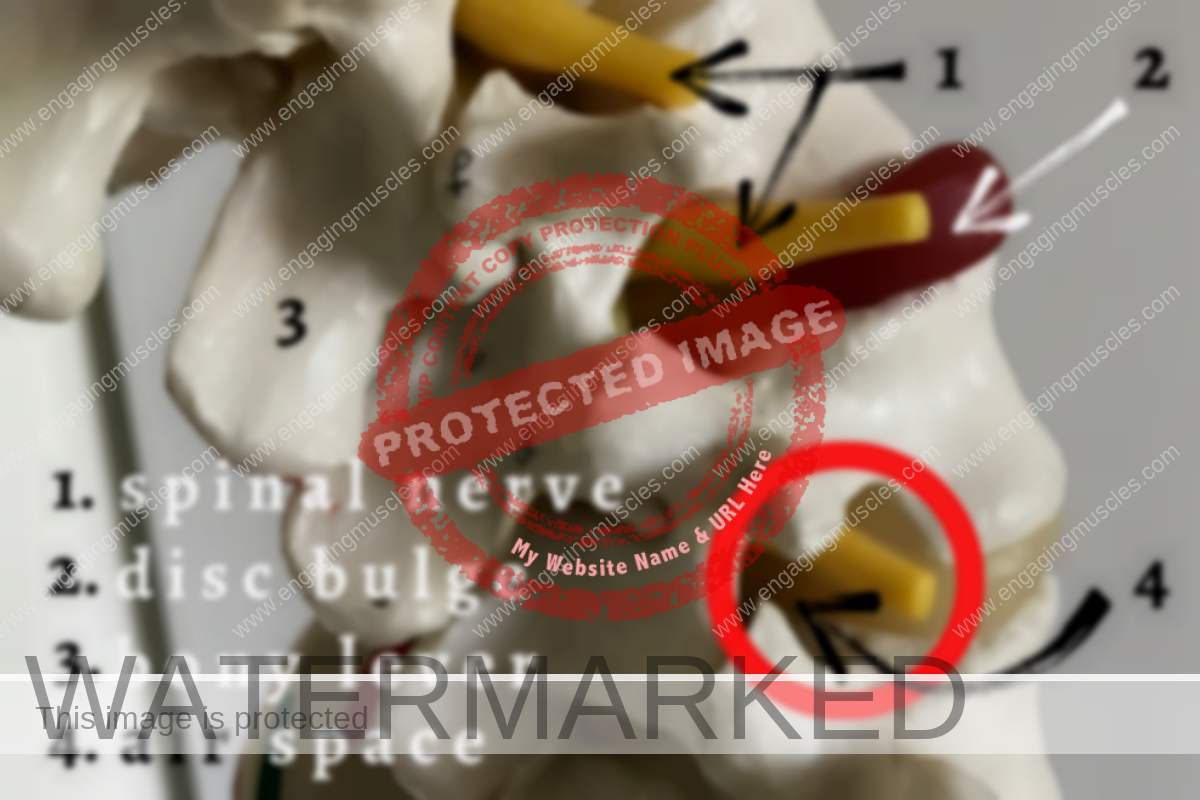How successful is low back surgery?
Are one-size-fits-all low back exercises and stretches for pain increasing your chances of undergoing a low back surgery?
In 2016, the total health care spending for Americans added up to 3 trillion? That dollar amount was up 1.4 trillion from 1996.
In 2016, a study published in The Journal of The American Medical Association (JAMA) estimated 134.5 billion was spent on back and neck pain — making it the highest payout that year.
The hundred billion-dollar question is, how much of the estimated 134.5 billion was used for low back surgery?
As you continue to read this post, I think you will find it’s likely much of the estimated 134.5 billion went to lower back surgery.
Unfortunately, that is still the case to this day.
If you are reading this before undergoing low back surgery, you are lucky. You are lucky in that reading (or listening) to what I have shared with you here will provide you with second-layer knowledge to make better decisions. (You can listen to this post with the player at the top of the page.)
When your goal is to avoid low back surgery, it is worth knowing that you mostly have access to surface-layer knowledge and first-layer knowledge.
This is where acknowledging that you don’t know what you don’t know comes into play. While we are on the subject of not knowing what you don’t know, you may have assumed that second-layer knowledge is readily available in college programs. If your thoughts went there, your best bet is to think again.
Along the same line, if you expect to leave back pain in your rear-view mirror for good, you are going to want to rethink much of the advice that has been repeated for decades.
If you are not willing to rethink the advice you have heard in the past, you will continue to get what you have been getting—back pain and fragility.
When you are experiencing low back pain, and you are in the mindset of avoiding any type of back surgery, the last thing you want is for an expert to chase the pain.
If you are not familiar with what it looks like to chase low back pain, it includes but is not limited to one-size-fits-all low back exercises and stretches.
Another example is “custom” orthotics. Experts who regularly deliver a placebo in the form of spinal adjustments, and those who pride themselves on being an authority on feet will try to sell you custom-made orthotics.
Custom-made Orthotics for Flat Feet Explained (Hint: It’s NOT Good!)
If there was an art to making custom foot orthotics, they would change your function for the better.
Instead, orthotics increase fragility.
Over the last few years, I have had experts on the feet defend their bias by telling me that I have a bias. I do have a bias! Everyone has a bias!
The difference between my bias and the experts who regularly recommend custom molded arch supports is my bias allows for an increase in stability. My bias is also in alignment with the principles of human function.
When you get off of my table with more strength and stability, you are closer to the side of the spectrum that reads antifragility.
I’m sure you have tried a lot. What you have not tried is that which gets to the root cause.
It turns out pain is a symptom. Pain is also a sensation. So, your best bet is to recognize that the level of pain is not what you want to measure.
If it were not for the environment and what is socially accepted as being therapeutic, an outside observer could think that low back exercises and stretches for pain look an awful lot like relying on the next best guess.
To avoid the vicious cycle from going on longer than you would like, it is worth knowing that experts know what can be done for low back pain. And yet, for decades, they have not done it. Thus, the reason for the 134.5 billion (and counting).
One example of what experts know and don’t do anything about is the mechanical relationship between your neck and low back.
If experts did what would allow for an increase in stability throughout your neck, the stability throughout your low back would also increase.
To put what you just read into perspective, increasing your muscles’ ability to provide stability improves the timing at which joints move.
In order to improve your mechanics, you want muscles to pull at the right time. When your muscles are fully capable of generating tension at the right time, your spinal joints will allow for motion in the right direction.
(Principles)
Your muscular system consists of well over six hundred muscles, and close to seventy-five percent of those muscles attach to your pelvis.
When your muscles are not fully capable of proving stability, you will not have mobility or flexibility that holds.
To increase stability, you have to do what will allow for more stability.

To say the same thing in a different way, stretching, foam rolling, spinal adjustments, and a deep tissue massage aimed at releasing muscles all have one thing in common; they do not increase stability.
Case in point, you can get spinal adjustments for months on end, and you will always fall short of increasing stability throughout your neck and lower back. Always!
Your body’s ability to compensate and the placebo effect only go so far.
Now that you have been made aware of how important stability is for knocking out pain and improving your overall function, I have a question for you, did an expert take the time to assess your muscles for how well they are providing stability?
The only way your muscles’ ability to provide stability at a joint can be managed is when it gets measured.
Nine times out of ten, the thought process is to measure mobility, flexibility, and strength. Well, without stability, the amount of mobility, flexibility, and strength you possess is relative. Because of that, your score is always going to be subjective.
When you are faced with what feels like the end of the road, low back pain can push you to do what you could not see yourself doing at the starting line.
“Doctors suck at estimating the probability of common conditions in scenarios they face on a daily basis, are not able to correctly interpret the tests they use, and don’t understand even very basic diagnostic testing concepts like sensitivity and specificity. It’s kind of like a pilot not being able to read an altitude indicator. Be afraid. Be very afraid.”
— Sebastian Rushworth, M.D., How Well Do Doctors Understand Probability?
(Priorities)
Remember, the level of pain is not the only variable worth measuring. (emphasis added)
While billions of dollars are thrown at chasing pain and symptoms, most experts will go to great lengths not to acknowledge that what is best for their business model comes before what is the best approach for you.
Time is a constraint. Faced with time constraints, sadly, maintaining the status quo has become the norm.
Even with a college education, gaps in knowledge exist.
College or no college education, when the goal is to avoid low back surgery, the best results come down to what experts spend their time doing.
(Perspective)
Second to low back and neck pain was musculoskeletal-related disorders.
I can only imagine the dollar amount thrown at chasing pain that was said to be coming from a piriformis muscle (that’s rarely tight).
Some version of “Stretch your piriformis.” or “Roll on a lacrosse ball to release your piriformis.” is the advice that gets repeated.
When you ask a friend for advice on how they dealt with pain or an injury, it is worth recognizing that there are things that people who have been in a similar situation can tell you. There are also things they will not tell you. And most importantly, there are things they cannot tell you.
For example, when the advice is “Stretch your piriformis.” or “Roll on a lacrosse ball to release your piriformis.”, what they cannot tell you is that stretching and rolling on a lacrosse ball increase instability.
To your mind, all of what I just mentioned feels good, right?! Well, your brain perceives all of what I just mentioned in a whole different way.
(Perception)
To your brain, all of what I just mentioned can be perceived as a negative input.
Sure, stretching your piriformis and rolling around on a lacrosse ball will feel better for a few hours. Deep tissue massage will also have you feeling better for a few hours.
All of the tools and techniques I just mentioned address tightness. And tightness is a symptom of something bigger—instability.
Whether it’s back and neck pain or musculoskeletal pain, every day, you are bombarded with bad advice and misinformation.
“In 1994, doctors at Hoag Memorial Hospital in California did a study that stunned nearly every spine doctor who heard about it. They took spine MRIs of ninety-eight men and women with no history of back pain and found that 64 percent of them had at least one herniated disk—-the sort of adulteration thought to cause back problems but that obviously doesn’t in many people.”
— Melonie Warner, author of The Magic Feather Effect (commission earned)
With so much bad advice, the problem ends up being as old as the solution.
One example of bad advice that is still popular to this day is, “If you strengthen your core, you will avoid back pain.”
If you found what you just read challenging to wrap your head around, it’s likely you have been conditioned to believe that all forms of exercise are productive.
Case in point, as popular as clamshells are in rehab, you do not have an external force to oppose the motion directly. That’s also the case with crunches. Clamshells and crunches are motions that are regularly performed without an external force.

Without an external force to oppose the motion, you are not increasing strength, which was the goal all along.
If you were to use an ankle weight or an exercise band when you perform clamshells, both would provide a mediocre form of external force. Both forms of resistance would not allow for an external force throughout the available motion that you have at your hip joint.
When the goal is quality over quantity, it’s also important to consider the repetitive motion at the joint. Because most experts are conditioned to chase pain (and pretend it’s something else), they fail to recognize that you are continuing to move an area that is already mad.
Talk about adding insult to injury.
A rule of thumb for low back exercises: if you have seen an exercise in a fitness magazine, there is a strong possibility the expert has you performing exercises that add insult to injury. This, when you are at the last stop before back surgery.
When you can consider that most experts have not been educated on how to best apply an external force to a motion, combined with the repetitive nature of a movement-based exercise—exercise ends up being a big reason for many orthopedic surgeries.
Exercise can increase fragility or increase antifragility. How you choose to go about exercise is up to you.
(Preparedness)
One reason why “If you strengthen your core, you will avoid back pain.” does not hold up is that plenty of people regularly train their core, and they still experience low back pain.
Even people with “six-pack abs” seek help for back pain. Not that having a “six-pack” equates to having strong abdominal muscles. Although you could make the case that having a six-pack is what the fitness magazines and other forms of media want you to think of when you think about core strength.
To be clear, I’m not suggesting you go forward with weak trunk and spinal muscles. Instead, I’m saying how you go about strengthening your trunk and spinal muscles matters.
If education was better and practical application was in alignment with the principles of human function, there would be far fewer back surgeries.
(Probability)
“The truth is always encountered but rarely perceived.” — unknown
So, why do the experts who perform low back surgery regularly refer their patients to experts who recommend cookie-cutter low back exercises?
Break that pattern, and there will be far fewer back surgeries.
Picture this; you feel like you are running out of options, and you are in the mindset of wanting to avoid back surgery at all cost. Because the expert on performing back surgery senses that you have not given up hope, they recommend you go to a different expert. This expert sees themselves as an authority on exercise and regularly recommends one-size-fits-all low back exercises. But you have already been to an expert with the same title, and they have already recommended cookie-cutter exercises for your low back.
I don’t know about you, but I would feel better about your chances of avoiding back surgery if tribalism, groupthink, and the halo effect were not part of our nature.

The shortlist of different types of lower back surgery includes a back-fusion, a laminectomy, and a discectomy.
Currently, the average life expectancy is 73-years old. If you were to undergo a low back-fusion surgery tomorrow, it is just a matter of time before you are dealing with degenerative changes in the form of arthritis.
This is inevitable because when you can no longer take advantage of motion at the fused vertebrae, your spinal column will find a different workaround.
If you were to get a laminectomy, in many cases, a low back surgery fusion will follow.
More recently, I have noticed an upswing in shooting a steroid injection into the sacroiliac joint (a.k.a., SI joint). It is a fad surgery. Once the band-aid wears off, you are back to where you started. Only, you are more fragile for having decided to take that path.
A couple of years ago, I worked with a patient who could not see an end to the pain; feeling vulnerable, the expert convinced her that paralyzing her deep paraspinal muscles (for three months) was the way to go.
Because she was not told that her deep paraspinal muscles are major providers of stability going into the procedure, this fad back surgery didn’t play out like she was originally told it would. Like any other unnecessary surgery, she was more fragile for having done it.
Fad back surgeries aside, if you are on the path of trying to avoid lower back surgery, you have more than likely experienced “traction.”
The reason why traction has always been ineffective at getting to the root cause is relatively simple: nothing was done to prepare the underperforming muscles’ to deal with the constant pull of gravity. In other words, as soon as you stand up from the traction table, gravity goes back to doing what gravity does on planet Earth–it pulls.
When you are in the echo chamber, you are surrounded by more than one bias. This includes but is not limited to cognitive bias, confirmation bias, and self-serving bias.
To get to the root cause, what you want is rarely offered on the conventional path. Instead of addressing symptoms and increasing compensation with one-size-fits-all low back exercises, what you want is for the trunk and spinal muscles to be fully capable of generating tension to the best of their ability. Then, there will be a decompression that allows for more space between the vertebra, and an increase in air space where the spinal nerve exits the spine. Think of it as internal traction. (See image below.)

At this point, you might be asking yourself why no one has told you muscles can provide traction. Unfortunately, when you rely on the experts responsible for the hundreds of billions of dollars that have been thrown at chasing back pain, you are in an echo chamber.
Like gravity, muscles pull.
“The most important characteristic of a muscle is its ability to develop tension and to exert a force on a bony lever. Tension can be either active or passive and the total tension that a muscle can develop includes both active and passive components.”
— Norkin and Levangie, authors of Joint Structure & Function
What gets overlooked by most experts is that muscles can underperform to the point that they are not pulling their weight. When muscles are not capable of performing to the best of their ability, muscles that play the same role will attempt to make up for what the underperforming muscles are not capable of providing.
Traction, spinal adjustments, stretching, and releasing muscles do not allow your muscles to develop tension to the best of their ability.
I’m sure you have tried a lot. But, not getting to the root cause is what has been missing.
It is one thing to know when you are going down a blind alley. It’s a whole other thing not to know when you are being led down a blind alley.
You can often hear me telling patients, ‘I might like the (insert expert here).’ Followed by, ‘But the reality is most of what the (insert expert here) bills for is addressing symptoms.’ That right there is why the results continue to be short-lived.“We cannot divorce emotions from thinking. The two are completely intertwined. But there is inevitably a dominant factor, some people more clearly governed by emotions than others. What we are looking for is the proper ratio and balance, the one that leads to the most effective action.”
— Robert Greene, author of The Laws of Human Nature
Now, let’s shine some light on the story you are telling yourself.
First things first, you don’t know what you don’t know. From where I sit, ninety-nine percent of the experts cannot recognize what they do not know. So it is doubtful that you are equipped to make educated decisions.
Often, without knowing it, the story that fits the narrative you are telling yourself is the one that is shared with you. In other words, more often than you realize, experts twist and shape their stories to fit your worldview. In some circles, what I just described would be considered manipulation in that it benefited everyone but you.
“Suppose a chess novice were to play against an experienced player. Predictably, the novice would lose precisely because he made inferior choices—choices that could easily be improved by some helpful hints. In many areas, ordinary consumers are novices, interacting in a world inhabited by experienced professionals trying to sell them things.”
— Richard Thaler and Cass Sunstein, authors of Nudge
It is also important to recognize that the stories that get tossed around among experts regularly shift in one way or another. For example, the title of a recent research article speaks to “evidence-based” practitioners who see themselves doing more than they really are.
The title starts with the words, What does best practice care for musculoskeletal pain look like?
While “best-practice care for musculoskeletal pain” sounds promising, objective thinking tells us that those experts are still chasing pain and recommending one-size-fits-all exercises.
Nonetheless, history has shown that when experts fit their bias to your emotions, it is a recipe for well over 100 billion to be thrown at chasing neck and low back pain.
The sooner you own up to the fact that you don’t know what you don’t know, the sooner you will get out of the vicious cycle.
There is wisdom in recognizing that you are ignorant in certain areas. This mindset allows for curiosity, learning, and, most importantly, unlearning.
If you can beat the resistance that has you stuck in your tracks, you are showing that you possess the maturity of mind and intellectual humility to go forward in a better way.
(Progress)
There are only two ways to increase stability.
One way for you to address stability is with a hands-on technique that addresses the tendinous attachments of each muscle.

The second way to increase strength and stability is with isometric exercises that target your low back.
A smartcut to truly strengthen your trunk and spinal muscles is to apply an outside force without motion at a joint. You can accomplish this with isometrics that allow for stability, strength, mobility, and, lastly, flexibility.
If you just read that and thought, “Well, that is everything I want from an exercise.” you are catching onto something special.
You can perform isometric low back exercises at home or in the gym.
If you are not clear on what an isometric exercise is, one example is a plank. Because you are holding your body in a static position, your muscles are performing an isometric contraction. When you perform a plank, the pull of gravity serves as the external force.
As popular as planks are in the world of gym science (a.k.a., bro-science), it is an exercise that fails to transfer to anything in your life. Not even sitting. Like clamshells and crunches, there is no outside force applied to any one muscle responsible for controlling the posture of your trunk and spine.

Performing a plank is also a great example of what you feel and what is really happening within your muscles not being in alignment with one another.
For years, experts and the media have said that sitting is bad for you.
Instead of performing low back exercises and stretches that the media and fitness influencers promote, your best bet is to prepare your body to deal with the demands of sitting and standing.
Progress is impossible without change; and those who cannot change their minds cannot change anything.
— George Bernard Shaw
If I were in your shoes and faced with the feeling of having no other option than to get low back surgery, I would open my mind to what is possible when muscles are capable of playing their role to the best of their ability.
How about you?
SHIP.
(Art)
Can’t get to Dallas? Get details on how you can work with me from home.
Thanks for taking the time to read this post! If you enjoyed this post, please subscribe to Engaging Muscles. You can also like Engaging Muscles on Facebook, subscribe to my YouTube Channel, or feel free to connect with me on Twitter @rickmerriam.
Some of the links I have shared with you are affiliate links. If you make a purchase using one of these links, I will receive a commission. The commission doesn’t cost you any more than what you would pay for these items on Amazon (as an example). As an Amazon Associate, I earn from qualifying purchases. When you use any one of these paid links, you are supporting the Engaging Muscles blog. That’s also the case with the Engaging Muscles podcast. This helps me to keep putting out valuable content.
- Author Bio
- Latest Posts

I have held a license to practice massage therapy for over 29 years. Early in my career, I was a nationally certified personal trainer for 18 years. During that time, I completed thousands of one-on-one private training sessions. I went on to teach biomechanics to personal trainers, group exercise instructors, and physical therapists throughout New England.
I worked as a sports massage therapist at ESPN.
Over the last few years, I have been quoted in Runner’s World UK, Massage Therapy & Bodywork, Massage Magazine, IDEA Fitness Journal, Massage & Fitness Magazine, and The Guardian Liberty Voice. I have also served as an applied biomechanics consultant for the fitness staff at Canyon Ranch, The Greenbrier, and ESPN.
From 2009 to 2018, I immensely enjoyed teaching applied anatomy & kinesiology at Parker University.
I offer the best deep tissue and sports massage at Engaging Muscles Massage in Dallas, Texas.